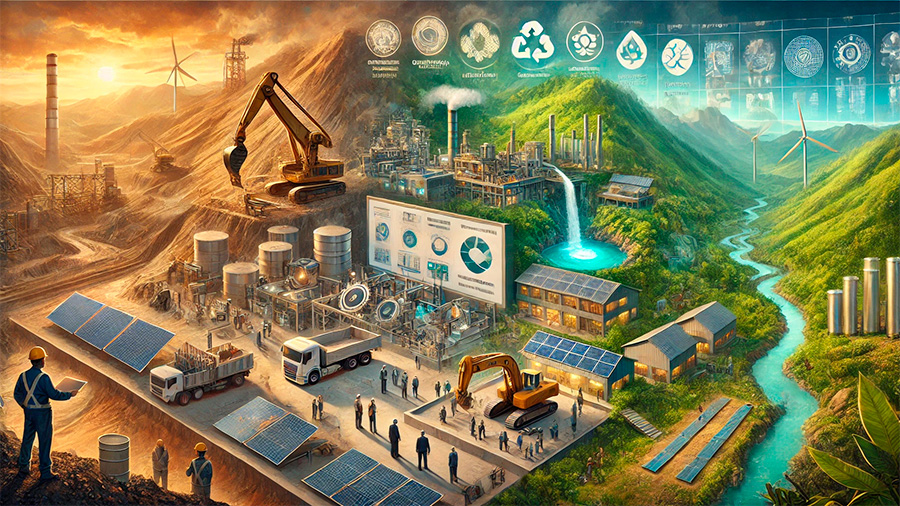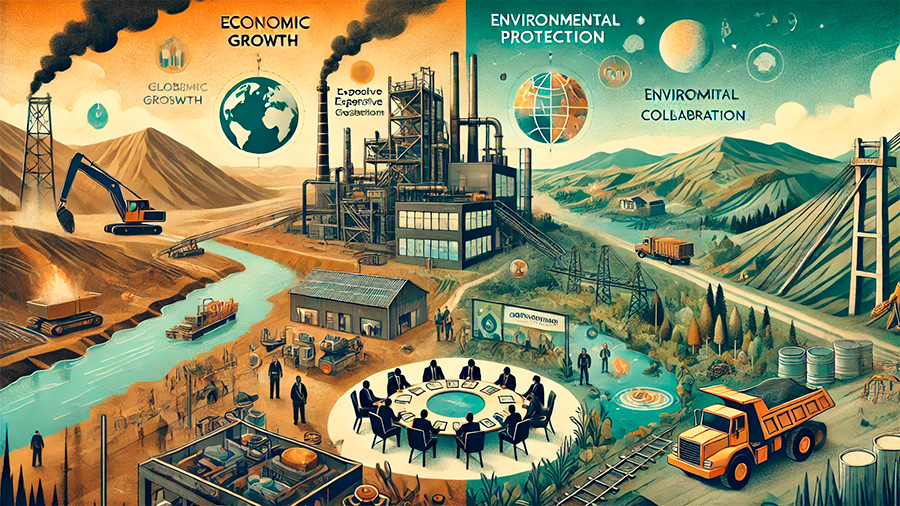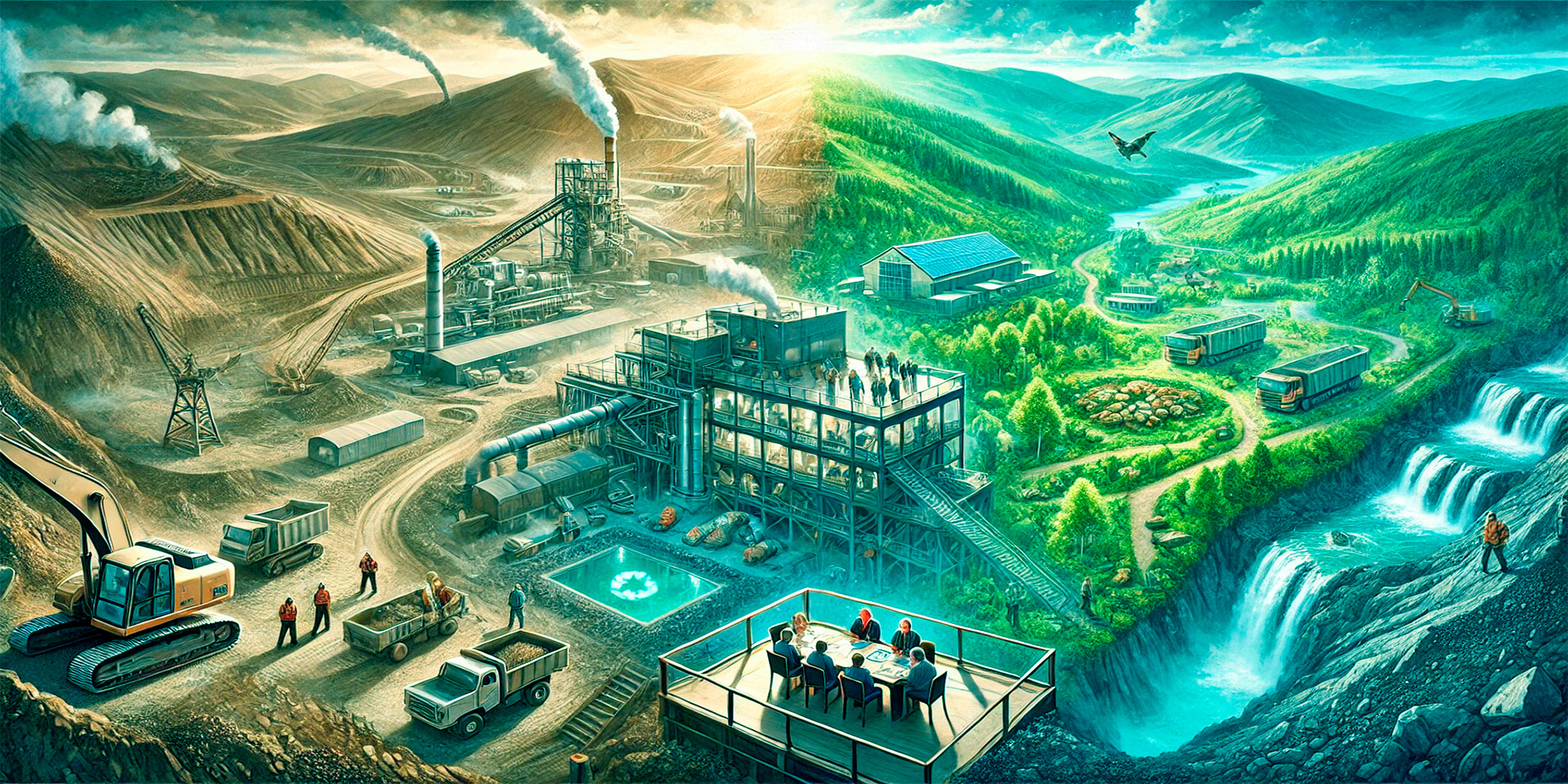As the demand for precious metals continues to rise, driven by their essential roles in industries such as technology, finance, and manufacturing, the mining industry faces increasing pressure to expand its operations. However, this growth often comes with significant environmental costs, including habitat destruction, water contamination, and carbon emissions. Governments, industry leaders, and environmental organizations are now working together to balance the need for mining expansion with the imperative to protect the environment. This article explores how various stakeholders are addressing the environmental challenges of expanding precious metal mining while striving to create sustainable practices for the future.
The Environmental Impact of Precious Metal Mining
Precious metal mining is a resource-intensive process that can have devastating effects on local ecosystems and communities if not managed responsibly. The extraction of metals such as gold, silver, and platinum requires significant energy, water, and chemical use, all of which can lead to long-lasting environmental damage if not properly controlled.
1. Habitat Destruction and Land Degradation
One of the most immediate environmental impacts of mining is the destruction of ecosystems. Large-scale mining operations often require deforestation and land clearance, which leads to the loss of biodiversity, displacement of wildlife, and changes in local ecosystems.
Consequences of habitat destruction:
- Deforestation: Mining activities often clear vast areas of forests, disrupting local wildlife habitats and contributing to biodiversity loss.
- Soil erosion: The removal of vegetation and soil during mining operations increases the risk of soil erosion, which can lead to sedimentation in nearby water bodies.
- Loss of biodiversity: The disruption of ecosystems and habitats can result in the loss of plant and animal species, many of which are essential to maintaining a balanced environment.
2. Water Pollution and Contamination
Mining operations often use toxic chemicals such as cyanide and mercury to extract precious metals from ore. These chemicals can seep into the surrounding environment, polluting nearby rivers, lakes, and groundwater sources, and posing serious health risks to local communities and wildlife.
Water pollution risks associated with mining:
- Cyanide leaching: Cyanide, commonly used in gold mining, can contaminate nearby water supplies, causing severe harm to aquatic life and local populations that rely on these water sources.
- Mercury contamination: Mercury is used in artisanal mining, particularly in gold extraction, and can accumulate in ecosystems, poisoning wildlife and entering the food chain.
- Acid mine drainage: When exposed to air and water, certain mining materials release sulfuric acid, which can lead to acidic runoff that contaminates soil and water systems.
3. Carbon Emissions and Climate Change
Mining is an energy-intensive process, particularly when it involves extracting and processing precious metals. The carbon emissions generated by mining operations contribute significantly to climate change, exacerbating environmental concerns and impacting local air quality.
Environmental effects of mining-related carbon emissions:
- Greenhouse gas emissions: The machinery, transportation, and energy used in mining operations contribute to carbon dioxide and other greenhouse gases, which drive climate change.
- Energy consumption: Many mining operations still rely on fossil fuels for energy, further increasing their carbon footprint and contributing to global warming.
- Air pollution: Mining activities generate dust and particulate matter, which can degrade air quality, affecting both local communities and surrounding ecosystems.

Efforts to Mitigate Environmental Impacts in Mining
Recognizing the environmental impact of mining, governments and industries are taking steps to mitigate these negative effects. Through stricter regulations, technological innovations, and sustainable practices, stakeholders are working to reduce the environmental footprint of precious metal mining.
1. Government Regulations and Environmental Standards
Governments around the world have implemented various regulations to control the environmental impact of mining. These regulations require mining companies to conduct environmental impact assessments, obtain permits, and adhere to strict operational standards to minimize environmental damage.
Examples of environmental regulations in mining:
- Environmental Impact Assessments (EIAs): Mining companies are required to submit EIAs before beginning projects to evaluate the potential environmental risks and propose mitigation strategies.
- Permitting and monitoring: Governments issue permits for mining operations, which include specific environmental requirements and ongoing monitoring to ensure compliance with safety and environmental standards.
- Land rehabilitation and reclamation: Regulations mandate that mining companies restore land after mining activities, replanting vegetation, and ensuring the return of wildlife habitats.
2. Technological Innovations in Mining
Technological advancements are helping mining companies reduce their environmental impact. Innovations such as energy-efficient equipment, alternative chemical processes, and automated mining techniques are enabling more sustainable practices in precious metal extraction.
Technological solutions to environmental challenges in mining:
- Green mining technologies: New extraction methods, such as bio-leaching and electrochemical processes, reduce the need for toxic chemicals like cyanide and mercury, helping to minimize environmental contamination.
- Automation and robotics: Automated mining equipment and robotic systems can improve efficiency, reduce energy consumption, and limit human exposure to hazardous environments.
- Energy-efficient machinery: Mining companies are investing in machinery that uses less energy and emits fewer greenhouse gases, contributing to a reduction in overall carbon footprints.
3. Promoting Sustainable Mining Practices
In addition to technological advancements, sustainable mining practices focus on reducing waste, improving resource efficiency, and ensuring that mining operations are socially responsible. Many mining companies are incorporating sustainability into their business models to meet growing public and regulatory expectations.
Key sustainable practices in mining:
- Water recycling and conservation: Mining companies are implementing water recycling systems to reduce water consumption and minimize the impact on local water resources.
- Waste management: Sustainable mining practices emphasize reducing waste and reusing materials, such as using tailings (waste from the mining process) for construction or energy production.
- Community engagement: Mining companies are increasingly working with local communities to ensure that mining projects benefit residents and mitigate negative social and environmental impacts.
4. Certification and Transparency Initiatives
Many organizations and industry bodies are working to promote sustainability in mining by establishing certification standards and encouraging transparency. These initiatives help improve the environmental and social performance of mining companies and enable consumers and investors to make informed decisions.
Examples of certification and transparency efforts:
- ISO 14001: This international standard sets criteria for an environmental management system, encouraging mining companies to minimize their environmental impact and operate sustainably.
- Fairmined Certification: This certification ensures that gold is mined responsibly, with a focus on environmental protection and social equity in artisanal and small-scale mining.
- Transparency initiatives: Transparency efforts, such as the Extractive Industries Transparency Initiative (EITI), require mining companies to disclose their environmental and social practices, fostering greater accountability in the sector.

Challenges in Balancing Growth and Environmental Protection
While significant progress has been made in mitigating the environmental impacts of mining, challenges remain. Striking the right balance between fostering economic growth through mining and protecting the environment requires continuous collaboration between governments, industries, and environmental groups.
1. The High Cost of Sustainability
Adopting sustainable mining practices often requires significant upfront investment in new technologies, equipment, and systems. These costs can be prohibitive for smaller mining companies, making it difficult for them to comply with environmental regulations and best practices.
Barriers to sustainable mining:
- High implementation costs: Sustainable technologies and processes can be expensive to implement, especially for smaller mining operations with limited budgets.
- Regulatory compliance: Stricter environmental regulations may increase operating costs and operational complexity, making it harder for companies to remain competitive.
- Resistance to change: Some companies may resist adopting new practices or technologies due to the perceived risks and costs associated with change.
2. Ensuring Global Collaboration
Given that mining activities often occur in developing countries with varying environmental standards, global collaboration is essential to ensure that environmental concerns are adequately addressed. International organizations, governments, and industry stakeholders must work together to enforce consistent standards across borders.
Collaborative efforts in mining sustainability:
- Global agreements: International agreements, such as the Paris Agreement on climate change, encourage countries to work together to reduce the environmental impact of mining and other industries.
- Shared best practices: Governments and industry groups must share successful sustainable practices and technologies to ensure that mining operations worldwide adhere to high environmental standards.
Conclusion
Balancing the growth of the precious metal mining industry with environmental concerns is a complex challenge that requires innovation, regulation, and collaboration. While mining provides critical resources for the global economy, it is essential that it be carried out responsibly to protect ecosystems, conserve resources, and safeguard the well-being of local communities. Through government regulation, technological innovation, and sustainable practices, the mining industry can continue to meet global demand for precious metals while minimizing its environmental footprint. By embracing these strategies, mining companies can ensure that their growth is both economically and environmentally sustainable.
